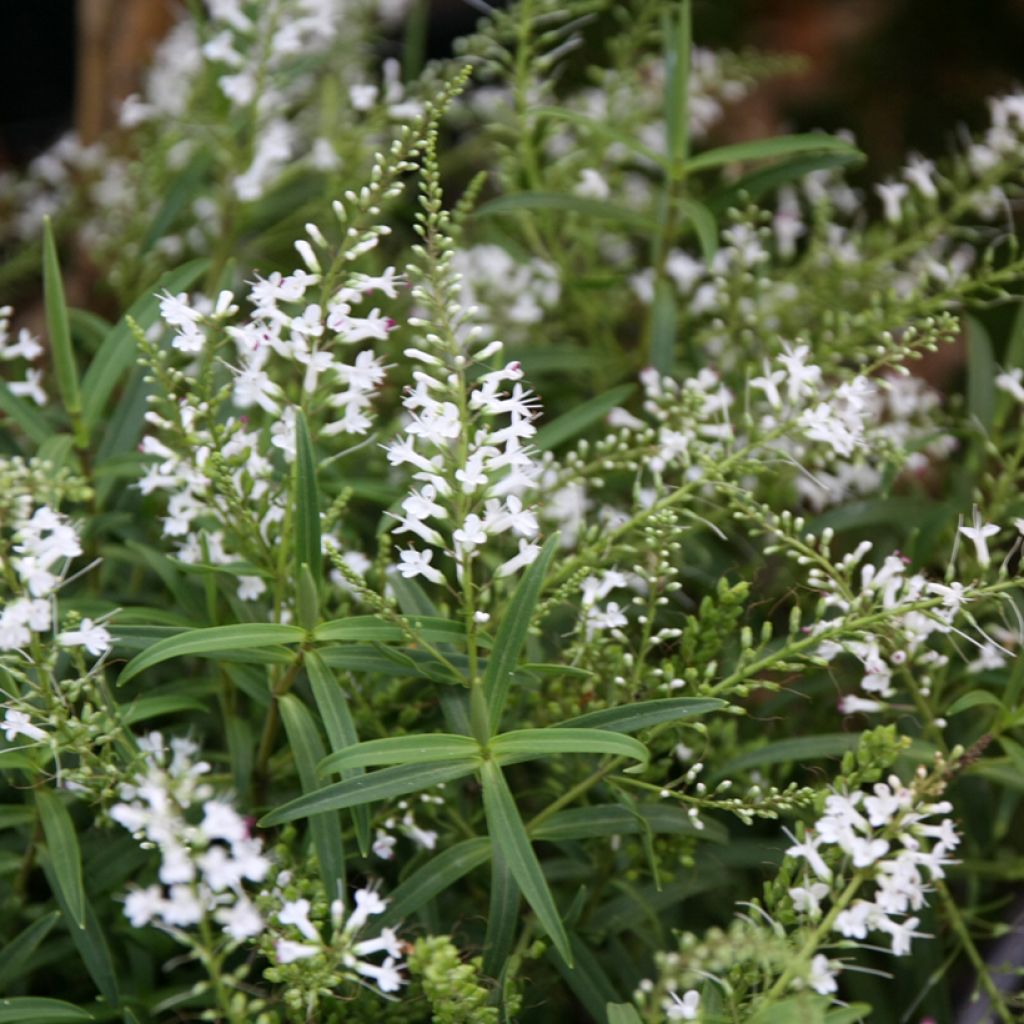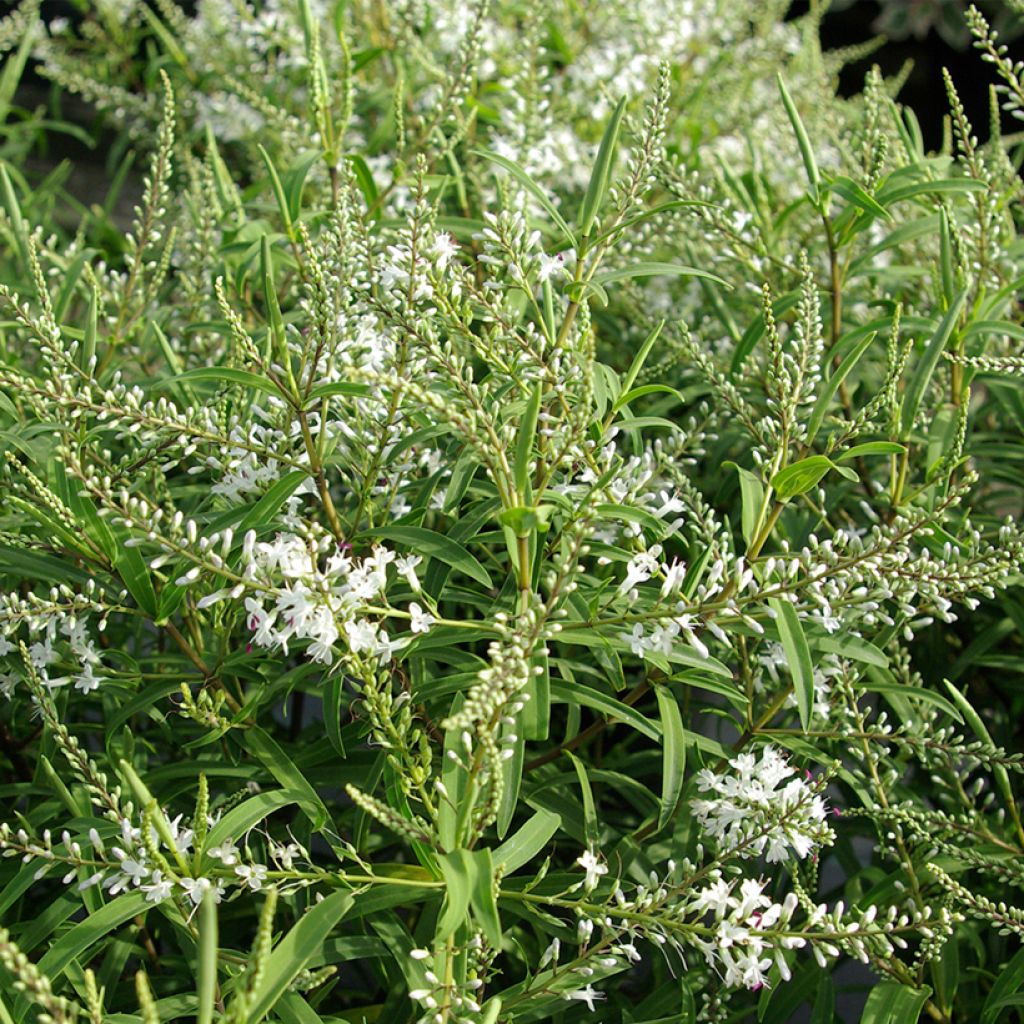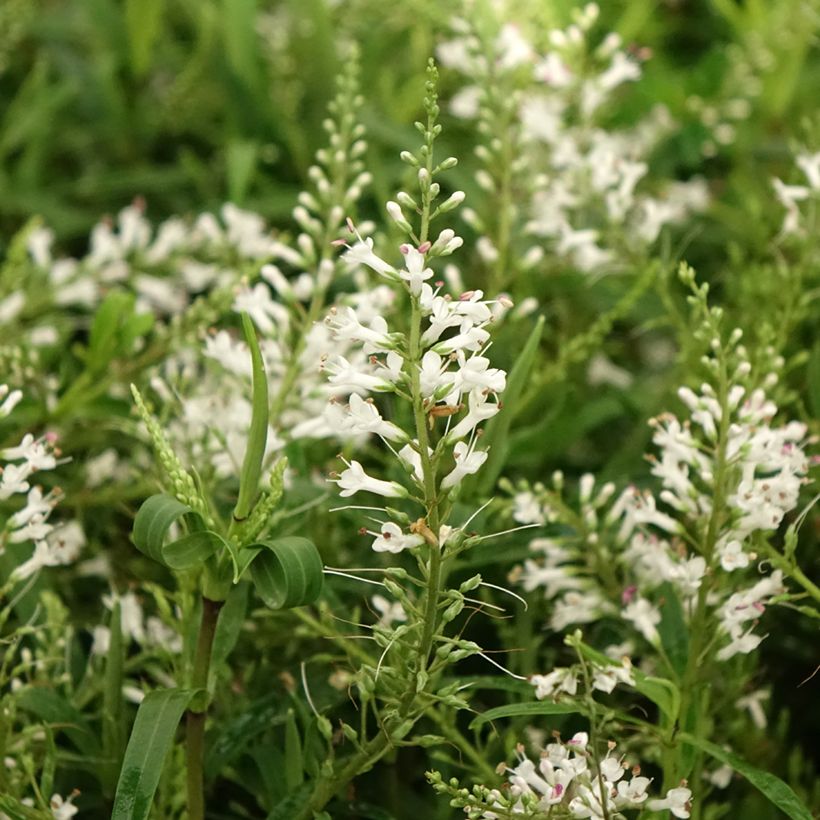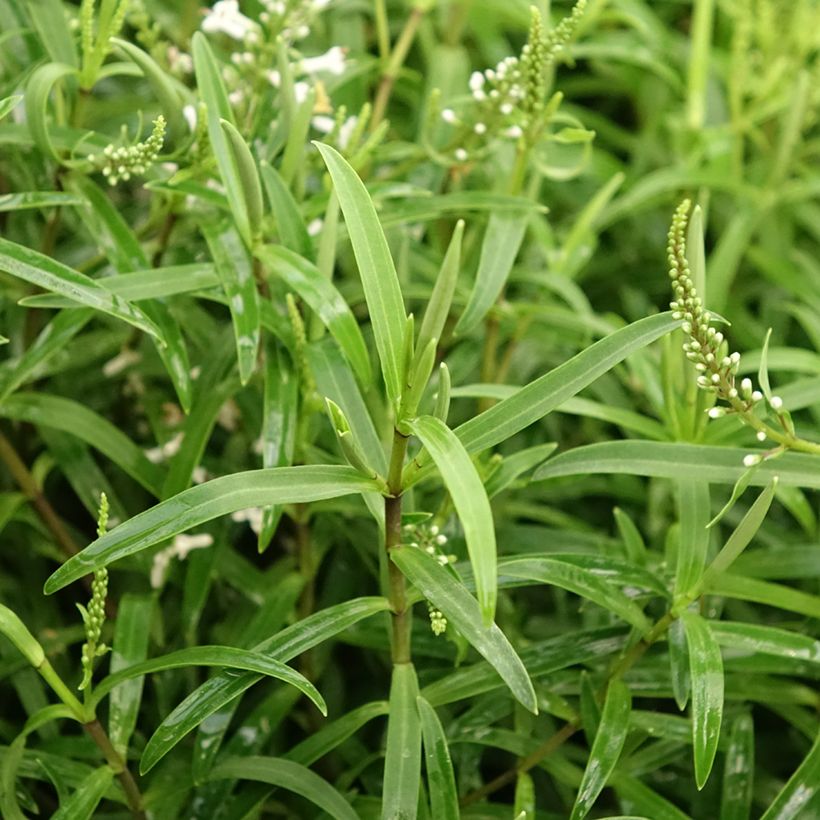

Hebe Kirkii


Hebe Kirkii
Hebe Kirkii
Hebe Kirkii
Shrubby Veronica, Hebe
This item cannot be shipped to the selected country
Delivery charge from €5.90
More information
Schedule delivery date,
and select date in basket
This plant carries a 24 months recovery warranty
More information
We guarantee the quality of our plants for a full growing cycle, and will replace at our expense any plant that fails to recover under normal climatic and planting conditions.
From €5.90 for pickup delivery and €6.90 for home delivery
Express home delivery from €8.90.
Does this plant fit my garden?
Set up your Plantfit profile →
Description
Hebe 'Kirkii is a bushy veronica shrub distinguished by its narrow and long, lanceolate foliage, ranging from olive green to grey-green in colour. The leaves are evergreen, thick, and leathery. The plant has a spreading, upright, and airy habit. It is vigorous and can reach a height of up to 1.5m. In early summer, this variety is adorned with long, slender, white spikes of flowers. It is fairly hardy in light and well-drained soil, tolerating temperatures as low as -10°C. It is undemanding and well-suited to coastal areas and Mediterranean climates, as it can tolerate dry and poor soils once established.
Hebes belong to the scrophulariaceae family and are related to perennial veronicas. 'Kirkii' forms a regular, slightly spreading bush that can reach a height of 1.50m. It is believed to be a natural hybrid between Hebe salicifolia and Hebe rakaiensis. It was discovered in 1868 near the upper Rangitata River on the South Island of New Zealand. It was named in honour of Thomas Kirk, a botanist from that island. Its foliage is semi-evergreen or evergreen. Its stems turn woody with age and bear lanceolate, long, narrow, shiny, olive green leaves, measuring up to 4cm long. The flowering mainly occurs in May-June, sometimes with a second bloom in autumn. The flowers are simple lateral inflorescences resembling thin and long spikes, about 5cm long and composed of numerous small white flowers. Deadheading the faded flowers can prolong its summer flowering. Pruning after flowering is recommended to maintain a compact and neat appearance.
Hebes are sometimes offered as perennial plants, as their use is closer to them than to shrubs. Slow-growing Hebe 'Kirkii is relatively hardy, down to -10°C. It is large enough to be included among other flowering shrubs for mild climates. Its summer flowering complements that of buddleias, with a mix of colours and foliage sometimes tinged with silver. In a coastal garden, it can be associated, for example, with Escallonia, Myrtus, Oleanders, Evergreen Ceanothus, Callistemons, or even Mimosas. Elsewhere, Hebes can be grown in large pots on the terrace, to be stored in a bright, unheated room over winter.
Report an error about the product description
Hebe Kirkii in pictures




Plant habit
Flowering
Foliage
Botanical data
Hebe
Kirkii
Scrophulariaceae
Shrubby Veronica, Hebe
Cultivar or hybrid
Planting and care
In our garden with heavy soil and a damp climate, they can only thrive in the scree garden, gravel garden or sloping bank. Environments that provide them with a rich, yet always well-drained soil. From their origins, they have retained a certain sensitivity to extreme cold. In colder regions, it is necessary to protect them or grow them in pots, bringing them indoors during freezing periods. As they grow, light pruning with hedge shears can be useful to maintain a dense and compact shape.
Planting period
Intended location
Care
This item has not been reviewed yet - be the first to leave a review about it.
Haven't found what you were looking for?
Hardiness is the lowest winter temperature a plant can endure without suffering serious damage or even dying. However, hardiness is affected by location (a sheltered area, such as a patio), protection (winter cover) and soil type (hardiness is improved by well-drained soil).

Photo Sharing Terms & Conditions
In order to encourage gardeners to interact and share their experiences, Promesse de fleurs offers various media enabling content to be uploaded onto its Site - in particular via the ‘Photo sharing’ module.
The User agrees to refrain from:
- Posting any content that is illegal, prejudicial, insulting, racist, inciteful to hatred, revisionist, contrary to public decency, that infringes on privacy or on the privacy rights of third parties, in particular the publicity rights of persons and goods, intellectual property rights, or the right to privacy.
- Submitting content on behalf of a third party;
- Impersonate the identity of a third party and/or publish any personal information about a third party;
In general, the User undertakes to refrain from any unethical behaviour.
All Content (in particular text, comments, files, images, photos, videos, creative works, etc.), which may be subject to property or intellectual property rights, image or other private rights, shall remain the property of the User, subject to the limited rights granted by the terms of the licence granted by Promesse de fleurs as stated below. Users are at liberty to publish or not to publish such Content on the Site, notably via the ‘Photo Sharing’ facility, and accept that this Content shall be made public and freely accessible, notably on the Internet.
Users further acknowledge, undertake to have ,and guarantee that they hold all necessary rights and permissions to publish such material on the Site, in particular with regard to the legislation in force pertaining to any privacy, property, intellectual property, image, or contractual rights, or rights of any other nature. By publishing such Content on the Site, Users acknowledge accepting full liability as publishers of the Content within the meaning of the law, and grant Promesse de fleurs, free of charge, an inclusive, worldwide licence for the said Content for the entire duration of its publication, including all reproduction, representation, up/downloading, displaying, performing, transmission, and storage rights.
Users also grant permission for their name to be linked to the Content and accept that this link may not always be made available.
By engaging in posting material, Users consent to their Content becoming automatically accessible on the Internet, in particular on other sites and/or blogs and/or web pages of the Promesse de fleurs site, including in particular social pages and the Promesse de fleurs catalogue.
Users may secure the removal of entrusted content free of charge by issuing a simple request via our contact form.
The flowering period indicated on our website applies to countries and regions located in USDA zone 8 (France, the United Kingdom, Ireland, the Netherlands, etc.)
It will vary according to where you live:
- In zones 9 to 10 (Italy, Spain, Greece, etc.), flowering will occur about 2 to 4 weeks earlier.
- In zones 6 to 7 (Germany, Poland, Slovenia, and lower mountainous regions), flowering will be delayed by 2 to 3 weeks.
- In zone 5 (Central Europe, Scandinavia), blooming will be delayed by 3 to 5 weeks.
In temperate climates, pruning of spring-flowering shrubs (forsythia, spireas, etc.) should be done just after flowering.
Pruning of summer-flowering shrubs (Indian Lilac, Perovskia, etc.) can be done in winter or spring.
In cold regions as well as with frost-sensitive plants, avoid pruning too early when severe frosts may still occur.
The planting period indicated on our website applies to countries and regions located in USDA zone 8 (France, United Kingdom, Ireland, Netherlands).
It will vary according to where you live:
- In Mediterranean zones (Marseille, Madrid, Milan, etc.), autumn and winter are the best planting periods.
- In continental zones (Strasbourg, Munich, Vienna, etc.), delay planting by 2 to 3 weeks in spring and bring it forward by 2 to 4 weeks in autumn.
- In mountainous regions (the Alps, Pyrenees, Carpathians, etc.), it is best to plant in late spring (May-June) or late summer (August-September).
The harvesting period indicated on our website applies to countries and regions in USDA zone 8 (France, England, Ireland, the Netherlands).
In colder areas (Scandinavia, Poland, Austria...) fruit and vegetable harvests are likely to be delayed by 3-4 weeks.
In warmer areas (Italy, Spain, Greece, etc.), harvesting will probably take place earlier, depending on weather conditions.
The sowing periods indicated on our website apply to countries and regions within USDA Zone 8 (France, UK, Ireland, Netherlands).
In colder areas (Scandinavia, Poland, Austria...), delay any outdoor sowing by 3-4 weeks, or sow under glass.
In warmer climes (Italy, Spain, Greece, etc.), bring outdoor sowing forward by a few weeks.
































